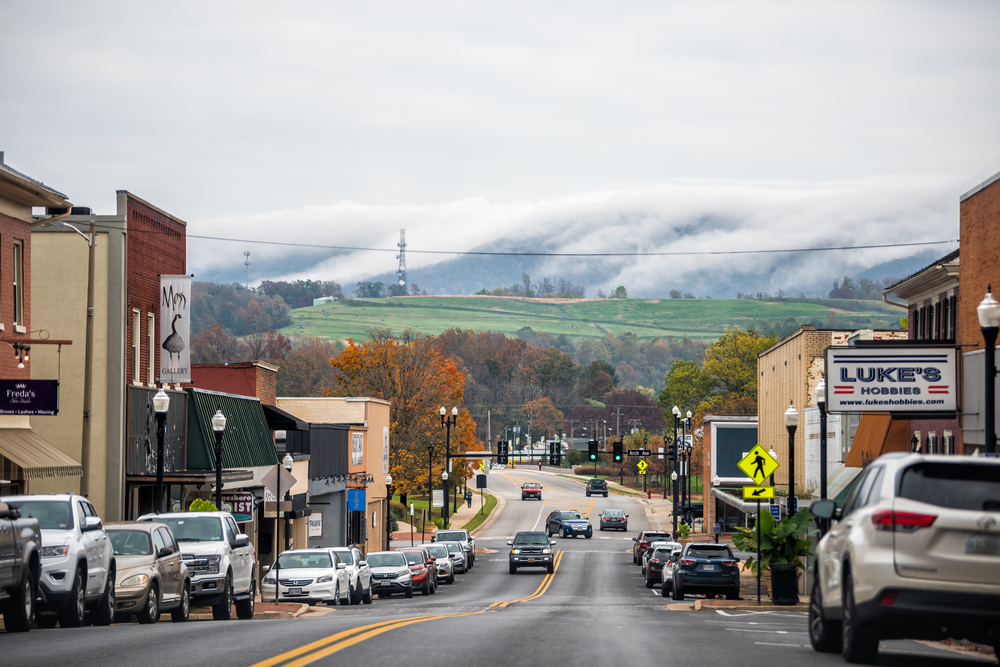ImpactAlpha, May 23 — With its mountainous terrain, water resources and ecological diversity, the Central Appalachia region across West Virginia, Kentucky, North Carolina and other states stands to be a refuge for climate migrants fleeing droughts, floods, wildfires and other calamities in other US regions, especially coastal areas impacted by rising sea levels.
To become a “climate haven,” however, the region needs investment in affordable housing, community health and economic development to be able to welcome, and prosper from, the influx of newcomers. Climate havens are regions that both avoid the worst effects of climate disasters and have the infrastructure in place to be able to welcome climate migrants.
“Long-term, if we’re looking at the data, Central Appalachia is predicted to have resources and naturally a very resilient environment, which makes it very well poised for in-migration,” says Baylen Campbell of Invest Appalachia, which released “Climate resilience in Central Appalachia: Impacts and Opportunities,” to document the region’s investment needs.
The report “aims to situate Appalachia within the broader climate resilience dialogue, and provide a basis for collective planning and action towards a resilient future for the region.”
A “whole-system approach” is needed to prepare the region for climate in-migration in an equitable, inclusive and sustainable way, the authors say.
Central Appalachia, made up of 172 counties in West Virginia, Eastern Kentucky, Southwest Virginia, East Tennessee and Western North Carolina, suffers from a lack of quality education and jobs, inadequate housing and poverty. Contrary to popular belief, the region is diverse with Indigenous, African-American, Latino and Asian communities.
“It’s really about outlining the need to cultivate opportunities out of challenges out of sheer necessity, not only to keep folks who are in and from Appalachia, but also to create the absorptive capacity for newcomers,” Campbell told ImpactAlpha. “Our goal is to seed, support and scale the solutions that are already on the ground within Appalachia communities.”
Climate gentrification
Rural gentrification, driven by climate in-migration, could place greater pressure on housing affordability in Central Appalachia. The report calls for expanding public investment and incentives for climate–resilient and affordable housing strategies that will prevent lower-income residents in Central Appalachia to move into more at-risk areas as a result of climate-driven rural gentrification.
In Eastern Kentucky, where homes are experiencing severe flash flooding, local housing developers including the Housing Development Alliance and HOMES Inc. are moving flood-impacted residents into homes built in less vulnerable areas.
Central Appalachia’s former mining workforce is transitioning into the region’s green economy workforce, driven mainly by regional organizations including Coalfield Development, ACEnet and Appalachian Sustainable Development, which are working to build green infrastructure through solar energy, energy efficiency and electric mobility.
Coalfield leads the Appalachian Climate Technologies Now Coalition, or “Act Now,” which last year secured over $90 million in federal and philanthropic funding to grow the Central Appalachia’s green-collar workforce, repurpose empty manufacturing facilities, and reclaim mined land for sustainable use.
Catalytic capital
Invest Appalachia is seeking to raise $40 million to deploy catalytic capital for economic inclusion, health equity, climate resilience, and place-based impact in Central Appalachia.
“We need bold changes in policy, investment and economic development strategies in order to prepare Appalachian communities,” says Invest Appalachia’s Andrew Crosson. Crosson said the fund is moving toward a final close in November, with interest from regional and national investors, primarily foundations, banks and family offices.
Invest Appalachia, through loan guarantees, technical assistance and conditional repayment grants, aims to catalyze capital for community health, clean energy and energy efficiency, and affordable housing projects that have potential to build Central Appalachia’s sustainable and economic development.
The opportunity to leverage federal support, particularly from the Inflation Reduction Act and infrastructure bill, raises the urgency for action. The report calls for federal support from the $27 billion Greenhouse Gas Reduction Fund to support community-focused entities in Central Appalachia.
“We’ve been pushing the IRA’s Greenhouse Gas Reduction Fund into every conversation to say that funding looks like it’s going to be very large-scale, unprecedented and very top down,” Crosson told ImpactAlpha. “Let’s be sure not to leave behind frontline communities and have some of those dollars flow to intermediaries and organizations that are closer to the ground.”











